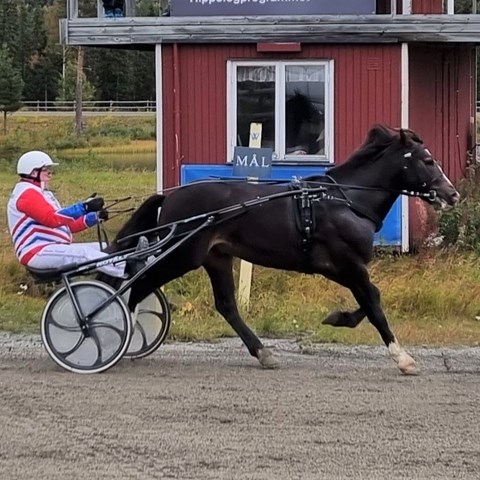Racing unshod improves the speed, but not all horses have sufficient hoof quality to run barefoot repeatedly without risking health problems. If measures of the ability to race barefoot based on routinely recorded data can be used as a genetic selection tool, it will improve animal health and welfare and be of economic value.
Starting horses fully or partially unshod in trotting races is quite common and has been shown to increase the speed and thereby improve performance. How often horses compete without shoes depends on several different factors. One factor that differs between horses is hoof quality, and it is influenced by, among other things, the horse's genetic makeup. How important genetic differences between horses are for their ability to compete unshod is studied in the project "Better hoof, better horse?" which started at the Swedish University of Agricultural Sciences, SLU, in November 2022.
Few studies have analysed large field data for performance in different shoeing or barefoot conditions, and genetic analyses of such data is lacking. The aim of this project is to investigate whether we can breed trotting horses for the ability to compete barefoot, and indirectly improve hoof quality and performance. We will use data from a large number of trotting races routinely collected over several years by the Swedish Trotting Association, for both Standardbreds and Coldblooded trotters. Various characteristics related to the proportion, or number, of barefoot races within a certain time period will be analysed. Previous studies indicate that it is primarily the quality of the hind hooves that is limiting for trotting horses. Genetic and environmental associations with the traits included in today's BLUP breeding index will also be estimated.
Another question in the project is how the horse's long-term durability, in terms of the length of the competition career, is affected by repeated starts without shoes at a young age. Knowledge of the effects of barefoot running on later performance is valuable for shoeing decisions as well as regulatory frameworks. To avoid injuries, 2-year-olds are currently not allowed to compete without shoes, nor is it allowed to start with unshod horses during the winter season.
The project will be monitored by a reference group appointed by the Swedish-Norwegian Foundation for Equine Research and the Swedish Trotting Association, which jointly finance the study.

Photo: Julio Gonzalez, SLU

